
views
X
Research source
For this reason, you may be able to successfully challenge the accuracy of police radar. In order to question the accuracy, you need to request certain information before your trial. Then you need to prepare to ask questions of the officer who was operating the radar.
- Police are allowed to radar while driving, although it has been shown to increase the risk of error.
- If you want to challenge a radar ticket, request a copy of the operational manual, proof that the radar has been tested, and the certificate of accuracy for the tuning forks.
- Question the officer’s training and ask if they calibrated the radar unit with the tuning fork. Find relevant legal cases in your state when making your argument to the judge.
Gathering Evidence

Think about hiring a lawyer. You can make your life easier if you hire a lawyer. The lawyer could gather all of the evidence and also challenge the accuracy of the radar in court. If you want to hire a lawyer, then contact your local or state bar association and get a referral. However, hiring a lawyer isn’t always practicable, especially when contesting a traffic ticket. For this reason, you might need to plan on challenging the accuracy of the police radar yourself. If costs are a concern, then ask the lawyer if you could meet for a consultation. You might pay for a half-hour of advice and also pay for coaching throughout the process. Some lawyers are willing to provide this service, which is called “unbundled legal services” or “discrete task representation.”

Write down your memories of the day. Soon after getting a speeding ticket, you should sit down and write down what you remember of the experience. Pay attention to the following details, which will be important as you challenge the accuracy of the radar: The weather. Was it cloudy? Overcast? Rainy? Sunny? The roadway condition. Was the road straight? On an incline or going downhill? Other signs on the roadway. Was the officer near a sign when he or she tagged you as speeding? Traffic flow. Were you the only car on the road? Were there other cars near you?

Check if you have a right to “discovery.” Discovery is the process for getting information from the police department. Generally, you can write a letter to the police and request certain information. You should check with the judge during your arraignment whether you have the right of discovery. If you don’t have an arraignment, then write a letter to the police department and make your request. If enough time passes without a response (say three weeks), then you might need to file a motion with the court. The court may have a motion form you can fill out. Attach your letter and explain in the motion that the police have not responded to your discovery request.

Ask for a copy of the operation manual. If you decide to challenge your speeding ticket, you can generally request a copy of the operational manual for the radar unit. You can ask for it in your discovery request. The operation manual is a great document to have. It is written by the manufacturer, so it’s authoritative. You should request a copy from the police department. The manual probably states that the unit must be calibrated with tuning forks before each shift. At trial, you can ask the officer who stopped you whether he or she calibrated the unit.
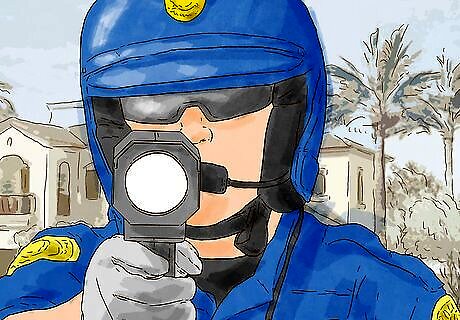
Request evidence of the officer’s training. As part of your discovery request, you should ask the officer who used the radar to prove his or her certified status. The officer should be able to provide you with a certificate or other evidence. If the officer was never trained to handle the radar, then you have a strong argument that he or she used it improperly.

Ask for proof that the radar has been tested. Any radar unit must have been independently tested by a lab within the past three years. As part of your discovery request, you should request proof that the unit was tested.
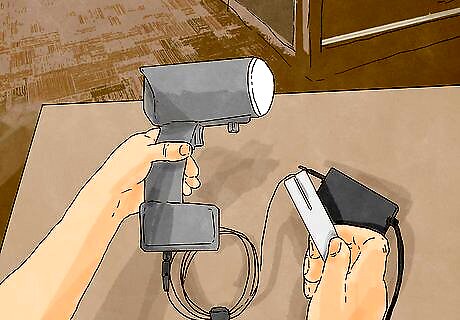
Request the certificate of accuracy for the tuning forks. The officer might have used the tuning forks. However, they could be inaccurate. You should request certification that they are accurate as part of your discovery request. In a Connecticut case, the court held that tuning forks cannot be considered accurate without a certification of accuracy.
Challenging the Radar in Court

Question the officer’s training. Radar is only as good as the officer using it. In court, you can challenge the officer who used the radar. If you have a lawyer, then he or she will ask questions about the officer’s training. However, if you are representing yourself, then be sure to ask the following questions: Did they attend a P.O.S.T.-certified course? How long was the course? It should have been at least 24 hours.
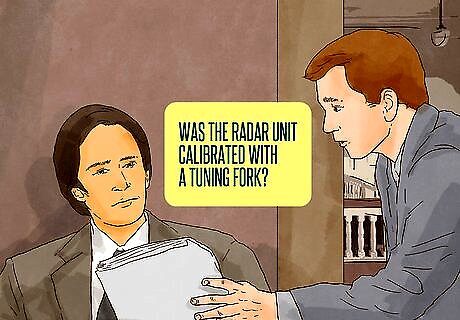
Ask if the officer calibrated the radar unit. Radar units come with tuning forks, and this is how they are mostly tested. You should ask the officer questions about whether he or she calibrated the unit: When did they calibrate the unit? Generally, the unit should be calibrated at least once every 30-60 days. However, your state may have different requirements. In some states, the unit must be calibrated after the ticket is issued. How did they calibrate the unit? The officer should have calibrated it using the tuning forks. However, many officers might think that they “calibrate” the unit by turning on a test switch. Both the Wisconsin and Minnesota Supreme Courts have held that using only the test switch is insufficient if it is the only method of calibration used. Where did the officer store the tuning forks? They need to be kept in a box. If not, then they can become inaccurate because of moisture or jostling.
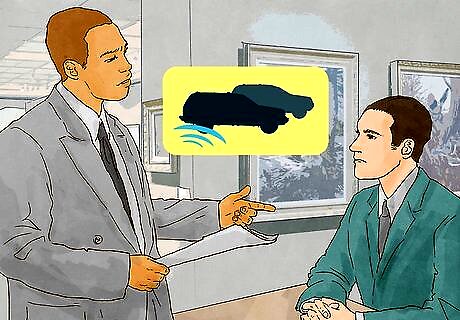
Ask if the officer saw other cars on the road. The radar may have been working fine. However, the officer might have actually hit something other than your vehicle. Radar often reflects back stronger when it hits a larger object. Ask whether the unit hit another car. For example, it might have hit a large lorry passing you on the road and not your two-door car. Radar beams also spread out as they travel. For example, if you were 400 feet away from the officer, then the radar was 100 feet wide. It could have hit many different vehicles on the road.
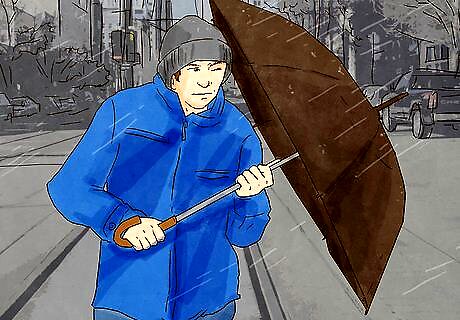
Have the officer tell you about visibility. For radar to work properly, there needs to be good visibility. Ask the officer how well he or she could see the day you were stopped for speeding. If the day was overcast or rainy, then ask the officer to describe the weather. Also ask the officer to describe how level the road was. Radar also needs a flat, level road to work properly. If you know you were caught on a winding or uphill road, then you should ask the officer to describe the road conditions.

Have other witnesses testify. The officer might claim not to remember how busy traffic was or what the weather was like. You can call other witnesses to testify about these circumstances as well. You may also testify on your own behalf. For example, you might have been travelling alone on the road that day. In that case, you might not have any witnesses other than yourself.
Making Your Argument to the Judge

Find relevant legal cases. Each state’s law is a little different. However, you want to have a good grounding in your state’s law before you make your legal argument. If possible, you might mention certain cases by name. Your judge is particularly interested in what higher courts have said about radar technology in your state. You can find court opinions from appellate courts using Google Scholar. Visit the website and click on “case law.” Then select your state’s court. In the search box, type “radar” and “speeding.” Read any cases that pull up. Look for cases which say how often the officer must calibrate the radar gun. This requirement might differ by state. You might also need a lawyer’s help. You can set up a consultation by contacting your local or state bar association and asking for a referral.
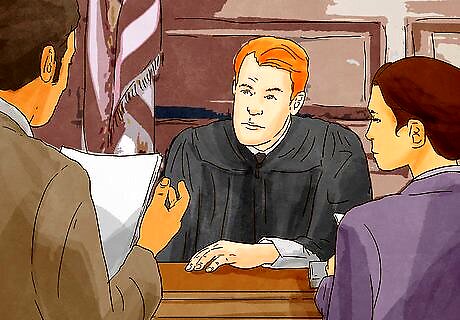
Outline your points. You won’t get a long time to make a closing argument at your trial. Even if you get an unlimited amount of time, the judge’s interest might wane pretty quickly. Accordingly, you should outline the points you want to make about why the judge shouldn’t believe the radar. You can group your points in the following manner: The gun wasn’t calibrated properly. Point to lack of evidence: no certificate, the officer didn’t calibrate before the shift, etc. The officer didn’t operate the gun properly. For example, the officer hasn’t had training in a long time or had no training using this type of gun, the officer couldn’t remember checking the speed after stopping you, etc. Even if the officer used the gun properly, there are too many variables that could have affected the reading. Point to the surrounding circumstances, such as busy highway traffic or overcast weather. You can argue the officer actually hit another vehicle and measured its speed instead of yours.
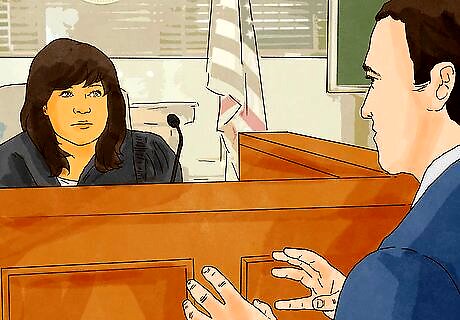
Make your argument to the judge. At the end of the trial, you will have to make an argument to the judge. You should pull together all of your evidence. Explain to the judge how this evidence creates reasonable doubt that you were speeding. Be as brief as possible. You should try to use 15 sentences or less, although you can use more if you have a lot of good evidence on your side. Speak in a loud, comfortable voice. You want the judge to be able to hear you. Refer to the judge as “Your Honor.” Refer to the officer by his or her last name, e.g., “Officer Jones.” Focus on the accuracy of the radar. You might have many different reasons for getting out of the speeding ticket. However, you should always say at least a few sentences about the radar’s accuracy. For example, you can say, “And, finally, Your Honor, the radar is not trustworthy. As this state’s Supreme Court held, radar must be calibrated after every stop. The operating manual also said the same. You heard from Officer Jones, who admitted that he didn’t use the tuning forks, relying instead only on the switch. That’s insufficient under the law, and there’s reasonable doubt whether I was going 70 miles an hour in a 55 lane.”











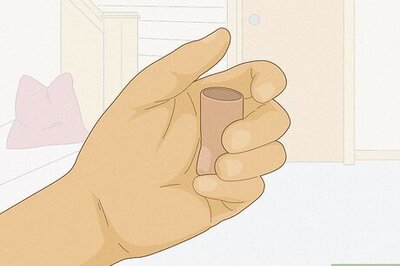



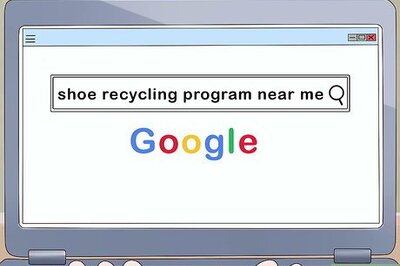



Comments
0 comment